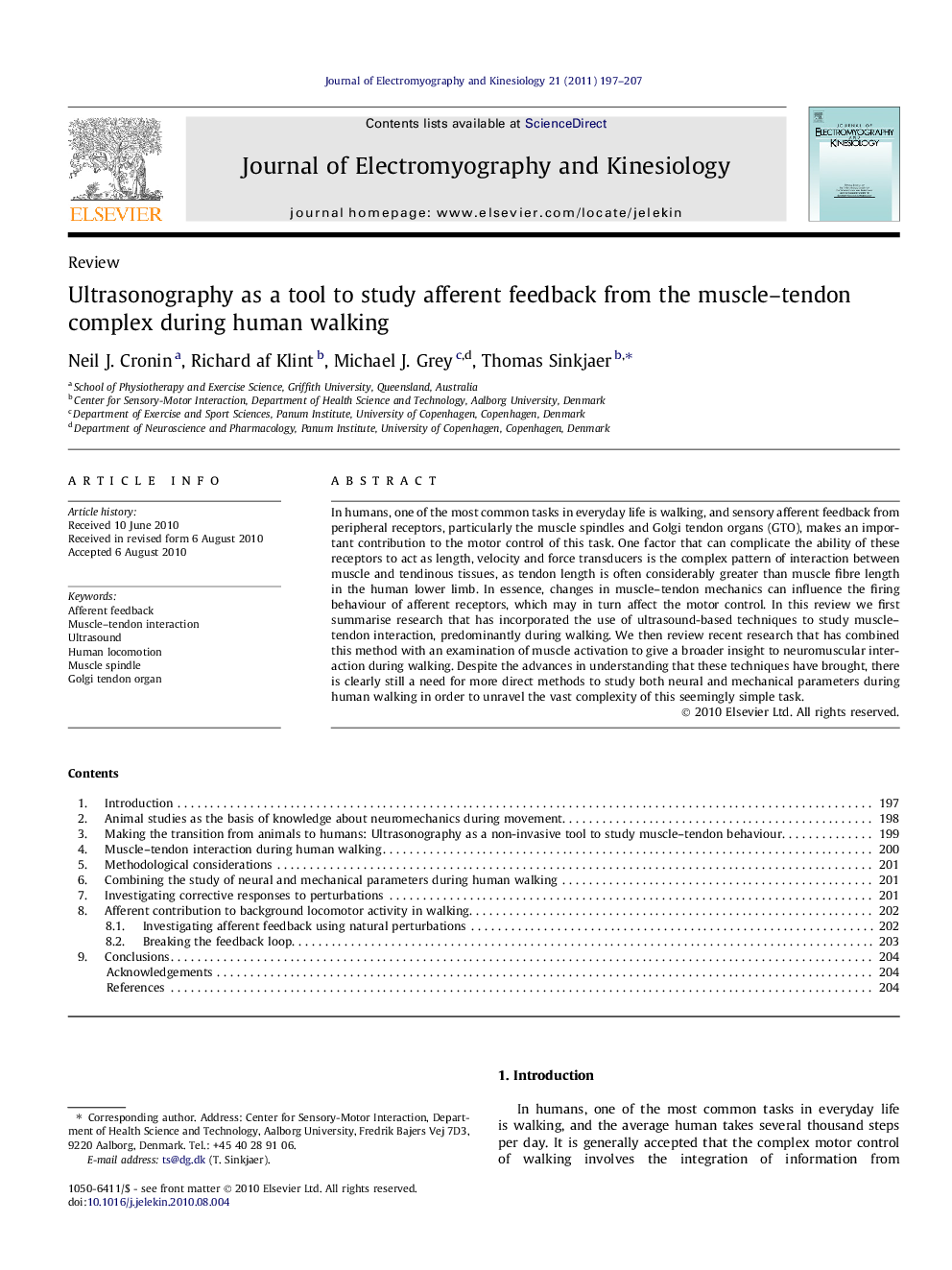| Article ID | Journal | Published Year | Pages | File Type |
|---|---|---|---|---|
| 4065009 | Journal of Electromyography and Kinesiology | 2011 | 11 Pages |
In humans, one of the most common tasks in everyday life is walking, and sensory afferent feedback from peripheral receptors, particularly the muscle spindles and Golgi tendon organs (GTO), makes an important contribution to the motor control of this task. One factor that can complicate the ability of these receptors to act as length, velocity and force transducers is the complex pattern of interaction between muscle and tendinous tissues, as tendon length is often considerably greater than muscle fibre length in the human lower limb. In essence, changes in muscle–tendon mechanics can influence the firing behaviour of afferent receptors, which may in turn affect the motor control. In this review we first summarise research that has incorporated the use of ultrasound-based techniques to study muscle–tendon interaction, predominantly during walking. We then review recent research that has combined this method with an examination of muscle activation to give a broader insight to neuromuscular interaction during walking. Despite the advances in understanding that these techniques have brought, there is clearly still a need for more direct methods to study both neural and mechanical parameters during human walking in order to unravel the vast complexity of this seemingly simple task.
